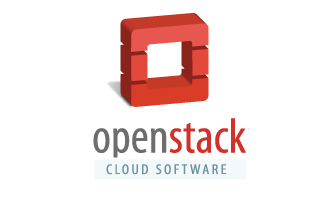OpenStack Juno Brings Big Data To The Cloud

10th milestone release of the open-source cloud platform debuts with 310 new features and 3,200 bug fixes
The OpenStack Foundation is set to debut its Juno release on Oct. 16, delivering the 10th major milestone of the open-source cloud platform since NASA and Rackspace started the project in 2010. The new release includes feature updates as well as bug and stability fixes.
Juno is the second major milestone update for OpenStack in 2014 and follows the Icehouse release that debuted in April.
OpenStack is built by a community of open-source developers that contribute code to the project. For Juno, 1,419 developers from 400 different companies participated in the development process. From a code perspective, 3,200 bugs were fixed and 310 new features were added during the Juno development cycle. The OpenStack vendor community includes the largest names in the technology world, with Intel, Hewlett-Packard, Cisco, Dell, AT&T, IBM and VMware among the partner companies.
“Overall, the biggest theme in Juno is the maturity of the project and we had 10 times as many bugs fixed as we had features added,” Jonathan Bryce, executive director of the OpenStack Foundation told eWEEK. “There is a lot of input from users running OpenStack in production, and that translates into a lot of work to make OpenStack easier to build, scale, operate and manage.”
In the Juno release, the major new project addition is the Sahara data processing project that enables users to run a Hadoop big data cluster in an OpenStack cloud. Sahara is a project that first began under the name Savanna, which was started by OpenStack vendor Mirantis.
“Sahara allows users to provision and manage environments for doing data processing jobs with Hadoop,” Bryce said. “That’s a common use-case that we’ve already seen from OpenStack users.”
 Updated
Updated
While Sahara is the only new project that lands in the OpenStack Juno release, there are plenty of updates to existing technologies in OpenStack, as well.
Swift Storage
The OpenStack Swift storage project now fully integrates cloud storage policies as part of the Juno release.
The Swift project officially announced its cloud storage policies features back in July as part of the Swift 2.0 release. That same technology is now fully integrated in OpenStack Juno. Storage policies enable users to define different categories of cloud storage based on policy. The categories could include geographic requirements or different hardware, including solid-state drives or traditional spinning disks.
Neutron Networking
The OpenStack Neutron networking project benefits from enhanced support for the next-generation IPv6 protocol. Prior release of OpenStack only offered limited support for IPv6, which is set to increasingly be required in large-scale cloud deployments, as the available pool of IPv4 Internet address space diminishes.
Neutron also gets a new Distributed Virtual Routing (DVR) feature that enables one router to span multiple network nodes.
Nova Compute
OpenStack’s Nova compute project gains an improved rescue mode as part of the Juno release. Bryce explained that when a server fails, an administrator sometimes has a need to connect into that server console to find out why it failed.
“With virtual machines, the rescue mode provides the ability to access the VM in a console-type mode,” Bryce said. “So rather than connecting via remote desktop, rescue mode enables the administrator to directly connect to the virtualization hypervisor to get console access.”
Since block storage or a virtual disk in a different location could be attached to a VM, getting full console access to help an administrator rescue a failed server can be a complicated process, Bryce said. In Nova, as part of OpenStack Juno, that process has been simplified and improved with the new rescue mode.
“So a user can now go into rescue mode and check for disk corruptions and make sure that a reboot won’t wipe out important data somewhere,” Bryce explained. “It also allows an administrator to boot into any arbitrary image, including a Linux rescue disk or data recovery tool to manage a virtual machine that has some kind of problem.”
 Keystone Identity
Keystone Identity
The OpenStack Keystone project, which provides access and identity features, has been enhanced in the Juno release with improved multi-cloud federation features.
“The OpenStack Icehouse release had the first round of basic multi-cloud federation capabilities, but it was limited to very specific use-cases,” Bryce explained. “What the OpenStack Juno release brings is support for standard federation protocols, including SAML [Security Assertion Markup Language].”
At the OpenStack Summit in Atlanta in May of this year, Troy Toman, cloud architect at Rackspace, delivered a keynote speech in which he postulated that OpenStack could become a planetary-scale cloud operating system. Having multi-cloud federation capabilities is a primary enabler of the planetary-scale idea.
“I won’t say that we have reached the nirvana state of a planetary-scale operating system,” Bryce said. “But it is now certainly possible to connect various OpenStack environments to each other and use a single access credential.”
Do you know all about Big Data and large-scale analytics? Take our quiz!
Originally published on eWeek.
 Updated
Updated Keystone Identity
Keystone Identity